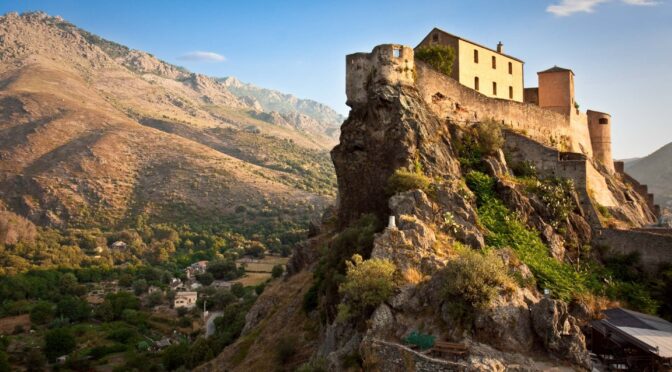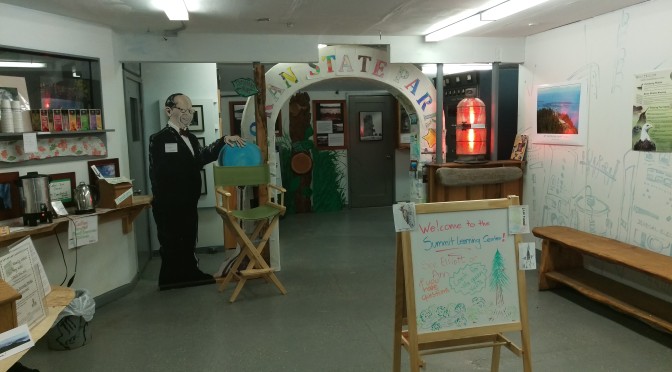Long, long ago, when I was just recently back from a fantastic week on the island of Corsica, I wrote a book in which I blew up big sections of Paris and Corsica. At the time, there were several groups fighting for the independence of Corsica; perhaps they still are–it seemed rather entrenched. I finished the book just before September 11, 2001. Somehow, it didn’t seem appropriate to do anything with it just then, so I put it away. And now, almost a quarter of a century later, I dug it up.
The link to it is below. If you read nothing else, try chapter 7. I like it best. And chapter 1. The rest kind of … sucks. By the end of retyping it (since 22 years ago I didn’t save it on a disk), I was inserting sarcastic comments, making fun of my own writing: [Oooh, magic! She pulled out a gun she’d left at home! Now it’s a fantasy book!] or [How could she come in? There were two big people blocking the doorway? Ah, must be more magic!]
Also my characters don’t grow or change, they just sort of lump along like day-old doughnuts, pulled by unseen forces until they have a bad idea and then they do something stupid. I’m almost embarrassed to put it out here, but the upside is I’ve gained two inches of space on my bookshelf.
Anyway, here’s the link to the whole thing, rather than chapter by chapter. Read it or not. Read it and make sarcastic comments and send them to me. We might as well get some humor out of it now! It’s in both Microsoft Word and a pdf (the pdf loads faster, at least on my laptop).
http://corsica.swiftpassage.com
Category Archives: Ann’s Outlook
Ann’s input as writings, images, etc…
Overnight Sailing Adventures
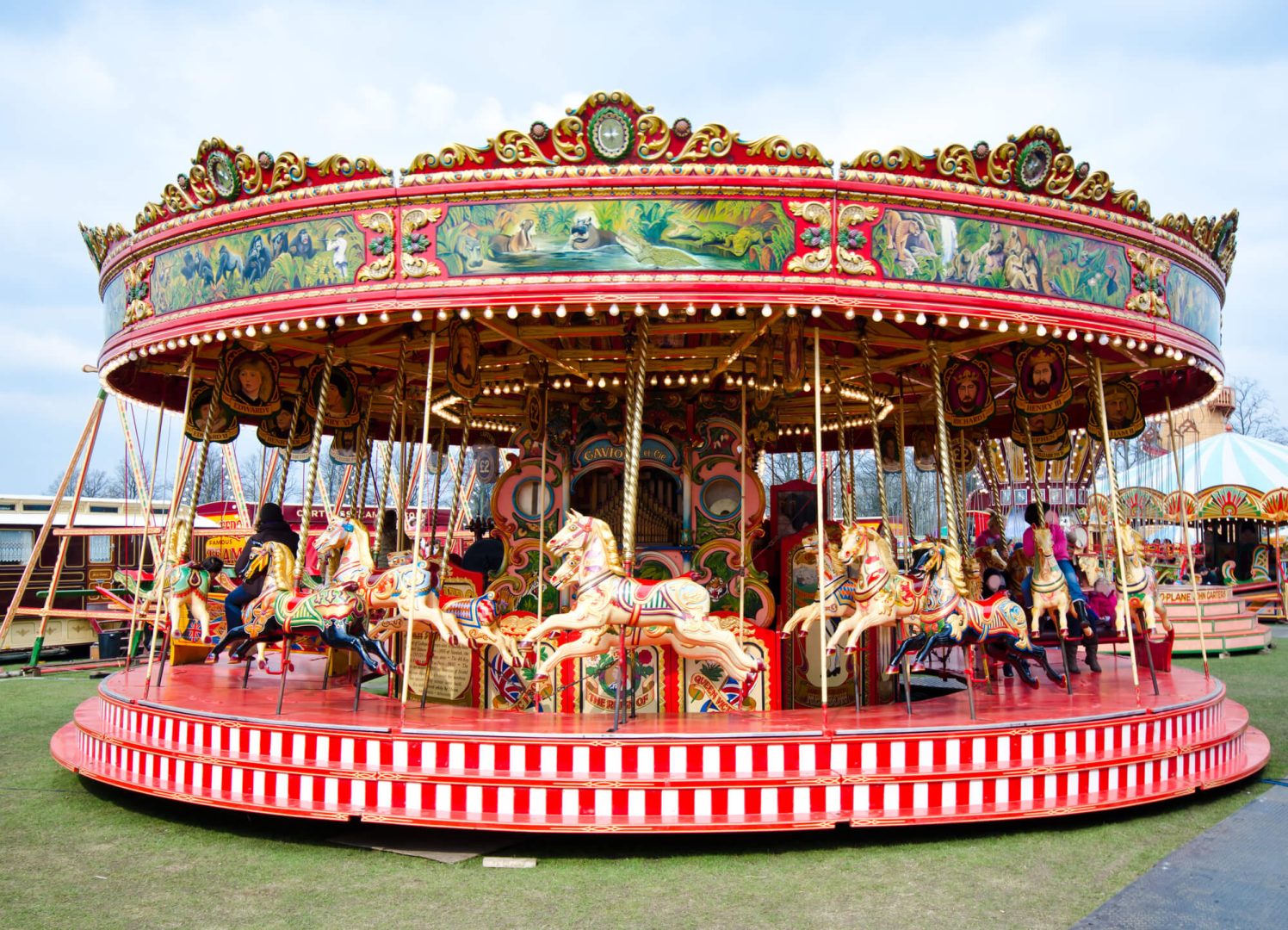
Let’s sail to the Bahamas, we said, or maybe the Dry Tortugas. At least as far as the Florida Keys. Those were, however, just dreams. Southerly winds had kept us on the Intracoastal Waterway (ICW) for all but one day of our trip by the time we got to Fort Lauderdale, just 45 miles from the beginning of the Keys. And that’s where we gave up.
There were two major reasons. The first was that the ICW bascule bridges (also called drawbridges, but on the water they’re divided into single and double bascule, depending on the width and/or engineering) and are not timed for sailboats. The bridges open at certain times, say on the hour and half hour. As an example, when we pass through one bridge, we have 30 minutes to get to the next one—which would be fine if we could go 6 mph. But we can’t, unless we have a strong wind and are not in the narrow ICW. Either it’s not possible, or we just don’t yet have the skill for sailing it—even assuming the wind was coming from the right direction. So we end up getting to the next bridge at 35 past the hour, meaning we have to hover in place for 25 minutes. Staying stationary is difficult in a sailboat, as the boat is at the mercy of the tides, the current, and the winds. And it is even more difficult to control when many, many powerboats at high speed tend to wake us, making helm management even that much harder.
And that’s the second reason: the powerboats. The wake they set up, one right after another, is stressful. One large wake can send us crashing into something—a post, another boat, a paddleboarder—on the other side. And there are hundreds of those boats traveling up and down the ICW at high speed, some of them with four 450-hp engines. (Our 37’ boat, by comparison, has one 40-hp engine from 1979.) Elliott is much better at handling the boat in those sorts of situations than I am.
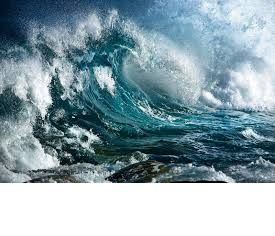 Between Fort Lauderdale and the Keys are many more bascule bridges, which limit how far we can go in a day when the timing doesn’t work out. So we considered going “outside”—on the ocean. But that would require wind from the right direction, which wasn’t forecast for close to a week, meaning we’d have to sit still in Fort Lauderdale for six or seven days. Ugh. The nearest dingy dock where we could go ashore was about two miles away, which was too far for us. We were anchored in Sunrise Bay, right off the ICW, and that spot is a favorite for day trippers—people who would come out, party with loud music, and then leave at sunset, making it noisy and full of those powerboats with their massive wakes, threatening to unseat our anchor. At least, that’s what I was afraid of; Elliott was more confident of the anchor. I am, apparently, a Nervous Nelly (Anxious Annie?) sailor.
Between Fort Lauderdale and the Keys are many more bascule bridges, which limit how far we can go in a day when the timing doesn’t work out. So we considered going “outside”—on the ocean. But that would require wind from the right direction, which wasn’t forecast for close to a week, meaning we’d have to sit still in Fort Lauderdale for six or seven days. Ugh. The nearest dingy dock where we could go ashore was about two miles away, which was too far for us. We were anchored in Sunrise Bay, right off the ICW, and that spot is a favorite for day trippers—people who would come out, party with loud music, and then leave at sunset, making it noisy and full of those powerboats with their massive wakes, threatening to unseat our anchor. At least, that’s what I was afraid of; Elliott was more confident of the anchor. I am, apparently, a Nervous Nelly (Anxious Annie?) sailor.
Between one thing and another, we decided to head north, back to Dallas Bluff eventually. So, in order to avoid the powerboats and the bridges, we decided to go on the outside as far as we could. The wind was from the right direction, the wave period was 5 seconds, and the seas were forecast to be 2 to 4 feet, which to us newbies sounded doable. We passed through the Port Everglades inlet (past a half dozen giant cruise ships) and started north–into a washing machine of waves and wind. Tossed back and forth, up and down, side to side—it wasn’t long before I was starting to get seasick—and unable to do anything but keep my head over the edge of the boat. Knowing there was no way we could keep that up for two days, poor Elliott was left to handle the helm for nearly three hours straight in rough seas back to Sunrise Bay. We were both shaken up by the trip. If anything had happened to him, we would have been adrift, wandering who knows where. Experienced sailors would know that wave height is only part of the picture; now we know that too!
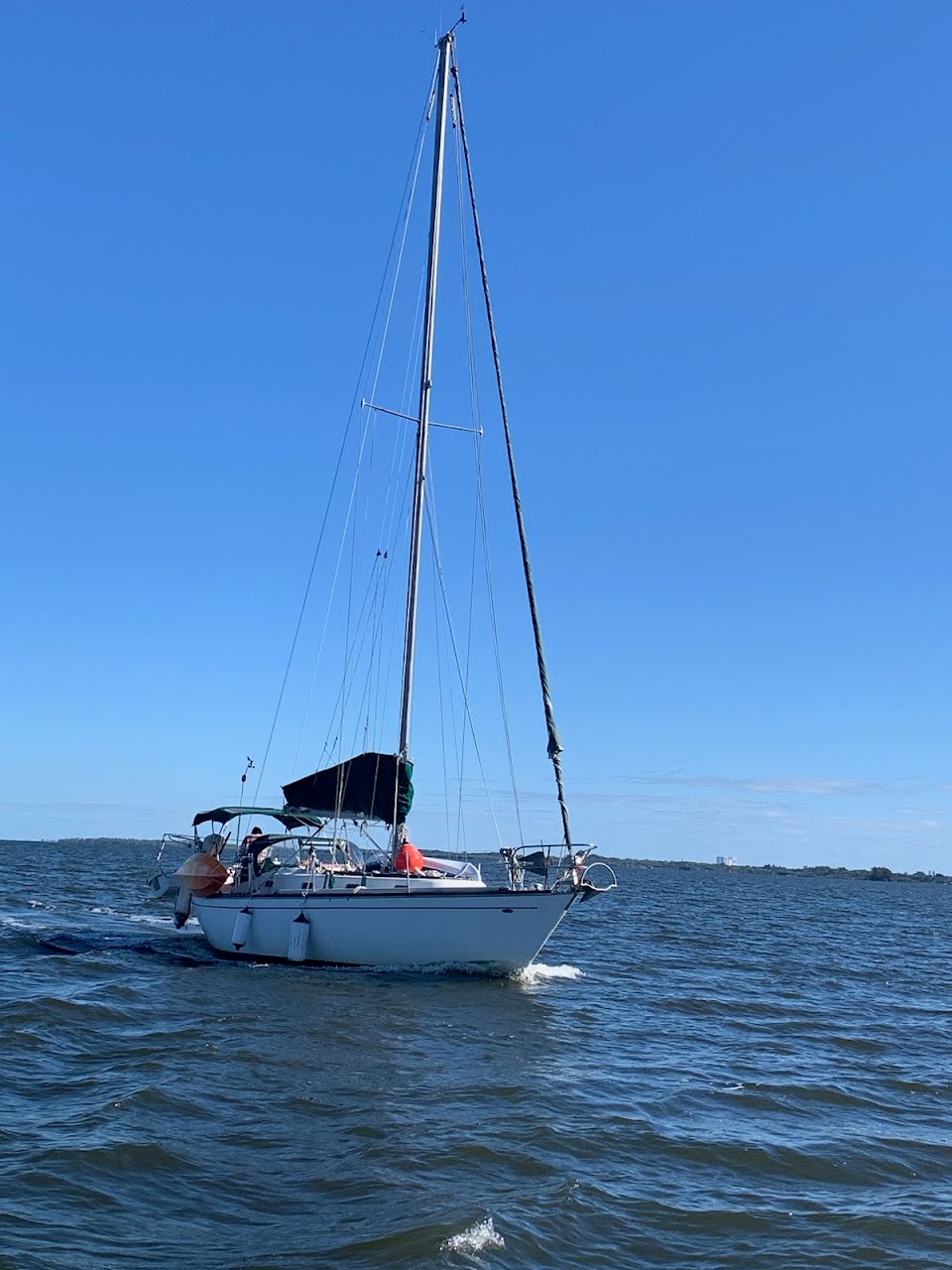 The next morning, the seas were said to be 1-2 feet with a 7-second period. That sounded better, so with some trepidation we set out again. And oh, what a difference! About 90 minutes in, with our sails up, we turned off the engine. Days like that are what sailing should be. Quiet, moving along at 6 knots in the right direction, we figured we’d be back in Georgia’s waters in about two and a half days.
The next morning, the seas were said to be 1-2 feet with a 7-second period. That sounded better, so with some trepidation we set out again. And oh, what a difference! About 90 minutes in, with our sails up, we turned off the engine. Days like that are what sailing should be. Quiet, moving along at 6 knots in the right direction, we figured we’d be back in Georgia’s waters in about two and a half days.
Knowing one of us would be at the helm all night long, we took advance naps. Around noon, half asleep, I heard the radio squawk: “Seatow, calling sailing vessel Kathryn”—and came wide awake. Seatow or Boat US is who you call when you need help. What was going on that Elliott needed Seatow? Turned out it was a wrong number—Elliott had been calling a tug, the mv East Coast, that was directly in our path and towing a large rusty container ship. Seatow has misheard the call and assumed we were calling for help. Whew! Elliott went down for a nap shortly later, and we had a thoroughly exhilarating sail through the evening. He pulled the first shift, from 8 pm to midnight, so I went down to sleep, though with an earlier nap, it was hard to fall asleep before 9. I awoke at 11 p.m., ready to help out and make coffee—but it wasn’t long before the night just deteriorated into a (for me) living hell.
First, the preventer broke. In essence, a preventer keeps the boom from slapping from one side of the boat to the other, preventing an accidental jibe. The boom began swinging wildly, as we realized it had also broken the boom vang, which keeps the boom from going up and down too far. So now the boom is swinging every which way, and anyone going forward risked getting hit in the head by a gyrating boom. Elliott rigged a temporary preventer, and since he’d had no sleep, went down to take a two-hour nap. As soon as he went to sleep, our autopilot controller stopped working, which meant I would have to hand steer the boat—at the same time the wind picked up. I managed to hand-steer for about 90 minutes when I didn’t think I could keep going, so I yelled for Elliott. At that point, we decided it would be best to motor, so we attempted to take down our mainsail and furl in the genoa (the forward-most sail). Alas, the genoa line was snarled somehow and because it’s such a massive sail, we couldn’t put the boat “in irons”—directly into the wind—and therefore couldn’t get the mainsail down. So we let the sheets (ropes) on the genoa loose, causing it to flap all over, and finally got the mainsail down. Elliott went forward (life vest and jack lines secured to the boat just in case—while I practiced my “Man Overboard” call to the Coast Guard. I think he spent nearly two hours at the bow, between one thing and another, going up and down, left and right, but eventually he got it all working. Somewhere in there our new Vesper radio stopped transmitting so we had to switch to our backup radio. While all this was going on, we were making 1.6 knots instead of our planned 4 knots, and many of those miles were heading off in the general direction of Greenland. So much for our plans of getting all the way back to Georgia.
Also, I wanted bioluminescence, starlight, and a beautiful sunrise/sunset at sea. Alas, there were clouds and no bioluminescence at all. Or if there was, I was too focused on the compass to see it. So much for those romantic notions!
By 10 a.m., Elliott had the preventer fixed, the boom vang reattached, the autopilot working, but the Vesper radio was beyond help (even though it was only 14 months old. Addendum: and about to be replaced under warranty). And I was getting…nonresponsive from lack of sleep. My brain was going “Oh, look at the pretty numbers on the compass! Oh wait, I’m supposed to steer by them… Shit.”
A word about how differently Elliott and I reacted to this stressful event. I think Elliott found it much more satisfying than I did. He’d see a problem, and then go solve it. Never mind he hadn’t had sleep, it was important to do that task, whatever it was. And he was up for the challenge. For me, it was, “I’ll think better when I have some sleep. Just let me nod off for half an hour, then I’ll be good again…for a while.” As I think about it, I’ve had very little prolonged stress in my life…short bursts here and there (exams, health events, normal stuff), but overall I’m pretty much in control and stress/drama free. Out there on the ocean, there is no control—at least for the non-mechanical among us. All I wanted was sleep, and that for perhaps 18 hours, or possibly 36.
We shortened our route and motored instead for the Port Canaveral channel. This was drama of a different sort, but at least it was daylight. The trip up the channel was rolly, windy, and required dashing across the channel in front of a Carnival cruise ship. By 3 p.m., we were tied up at a boat slip. We took showers (first time in 10 days—oh, the pungent life of a sailor!), and fell asleep.
As an addendum, the trip up the Canaveral Canal and through its lock the next morning were fantastic. We saw a bald eagle, a couple of roseate spoonbills, and flying fish. It was a slow motor to our next destination, Titusville, and that’s just what we needed. We’ve been at Titusville Marina for a couple days now, and the perils of the night seem far away. I’m not sure I ever want to do an overnight again, but then, in the middle of that night, I didn’t even want to sail again.
It seems the highs are really high on a sailboat, the lows are really low. Kind of like a roller-coaster. Personally, I’ve always liked the carousel better.
Self-centered Nonsense. Feel free to skip.
2020 is not my year. I realize it’s really not anybody’s favorite year, except maybe the makers of N95 masks. But as far as my life goes, this year really sucks. I had 68 really great years so I shouldn’t be complaining. Many people—my own parents included—don’t make it that far, healthy or not.
Let me sum up.
In March I had abdominal pain which led to surgery for a 14-cm kidney cyst removal in April. I have scars from belly button to around my side. It meant no running for a while—hell, I couldn’t do a single sit-up for weeks. I admit to much greater empathy for anyone undergoing major surgery now. Said cyst might have been prenatal and simply not bothered me till it got so big it started squeezing other bits of me out of the way. I don’t know how many stitches there were on the inside, but there were a heck of a lot of staples on the outside. (Normal kidney cysts, by the way, are 5-10 mm.) I’m released from care now and all is well on that front.
Or it was till June 13 when I started running again. And then fell. So now I have memory loss—I still don’t know where it happened or how I got back to the condo in Charlotte. Thankfully, a friend was there to make sure I didn’t do anything really stupid, like ordering 100 pairs of my favorite running shoes on a shopping binge. Which is just as well because now I’m walking and of course running shoes aren’t suitable for walking long distances.
Then along came August. I went for medical checkups not suspecting anything at all was wrong. But it turns out I have polyps in unmentionable places—wait, I’m a grown-up, I can say it—anal polyps, that have to be surgically removed because they’re painfully close to nerves in said unmentionable places. Painful being the operative word. Surgery—painful, embarrassing, and most definitely necessary—is scheduled for right smack in the middle of when we intended to be moving from one house to another, two states away. I’m confused—is that a good thing or a bad thing? “Honey, I can’t lift this box of tissues. Can you get it for me?” is sort of a good thing. “Honey, I can’t poop. Help!” is not so good.
The next day I found out I’m 1.5 inches shorter than I used to be. I was in denial—how can I be that much shorter and not notice? I mean, I don’t go around kissing Elliott that often anymore, but surely I would have noticed if I’d bussed his chin instead. But no. I can only conclude he’s 1.5 inches shorter as well. Alas, I have osteoporosis. I’m not believing it until I stand next to my daughter, who was excited some years ago when she magically ended up a slight bit taller than I. But with covid-19, it might be a while before I can check that one out. Also, because of said kidney issues (see above), I need to see an endocrinologist to make sure I get the right medicine for the osteoporosis. Sigh.
And today I found out I have melanoma. Granted, it was caught early—I do go for yearly skin checkups. And I get points because I’m the one who called attention to it. But it’s on my arm, and there will be surgery involved. And stitches, more stitches. Soon, I’ll be looking like FrankenAnn. How did I go from 68 years with no stitches to a gazillion stitches in one year?
I eat healthy—mostly vegetarian, but occasional steak and BBQ lapses. I exercise regularly and I’m training for my sixteenth marathon. I don’t smoke, and I don’t drink to excess. Usually.
I’m kind of afraid to go to another doctor this year.
A long time ago (in a galaxy far away), when I was still living in Michigan with six younger siblings, once in a while my father would insist on a poetry night. Each one of us kids would have to recite a poem before dinner, and the younger you were the easier it was. The flip side of that was, I always had the hardest. Usually I would choose something flippant, like The Spider and the Fly. But the last one I remember doing was Oliver Wendell Holmes’s The Last Leaf on the Tree. For some reason, it seems appropriate now. I think my brain is the last leaf on my body’s tree, I guess. Of course, if that’s not true, I’d probably be the last to know.
The Last Leaf
By Oliver Wendell Holmes Sr.
I saw him once before,
As he passed by the door,
And again
The pavement stones resound,
As he totters o’er the ground
With his cane.
They say that in his prime,
Ere the pruning-knife of Time
Cut him down,
Not a better man was found
By the Crier on his round
Through the town.
But now he walks the streets,
And looks at all he meets
Sad and wan,
And he shakes his feeble head,
That it seems as if he said,
“They are gone.”
The mossy marbles rest
On the lips that he has prest
In their bloom,
And the names he loved to hear
Have been carved for many a year
On the tomb.
My grandmamma has said—
Poor old lady, she is dead
Long ago—
That he had a Roman nose,
And his cheek was like a rose
In the snow;
But now his nose is thin,
And it rests upon his chin
Like a staff,
And a crook is in his back,
And a melancholy crack
In his laugh.
I know it is a sin
For me to sit and grin
At him here;
But the old three-cornered hat,
And the breeches, and all that,
Are so queer!
And if I should live to be
The last leaf upon the tree
In the spring,
Let them smile, as I do now,
At the old forsaken bough
Where I cling.
I think I must be feeling a bit self-centered today, so excuse this mess. Somehow, it helps to put this all out there, knowing there’s only a half-dozen people (if that) who read our blog anymore.
Maybe my lesson in all this is “Empathy.” Having been blessed with good health for so long, I tended to lose patience with those who focused on their own health, even if I never (I hope) showed it. So if you’re losing patience with me today, I totally understand. I’ll get over this. It’s just a bit much today.
And as Seth Myers says in closing, “Stay safe. Wash your hands. Wear your mask. We love you.”
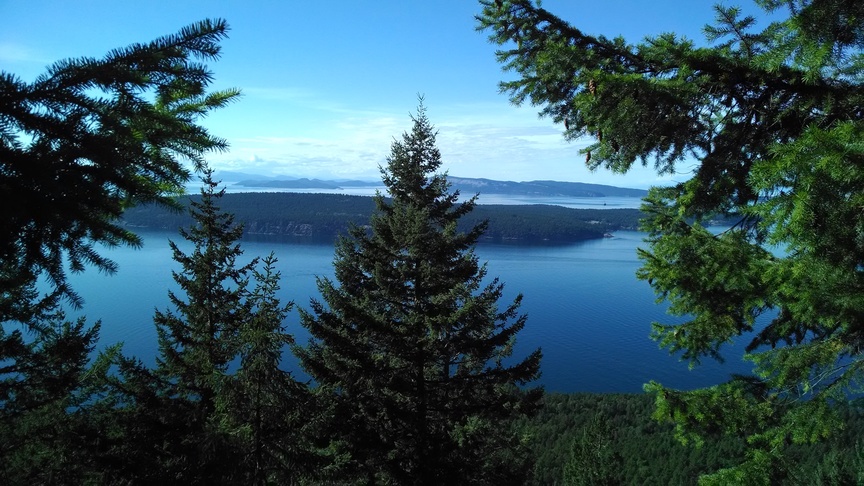
Typical Day at the Learning Center
The Summit Learning Center (SLC) is open from 11 to 4 Friday through Monday, other days as can be arranged. Wednesday this week was cold and drizzly–in the low 50s at the top–yet dozens of bicyclists and far more hikers than I imagined had venture out in the weather and arrived at the top, cold, wet, and euphoric. At 10:45, faced with the decision to sit in a cramped RV all day or open the learning center where coffee and heat are found, I decided to open up and put the bikers and hikers out of their smug misery.
The SLC’s budget may never be the same. Coffee, hot chocolate, and tea were in (pun intended) hot demand, and directions to the “shortest way back to…” hikes were requested. Thankfully, I’d hiked both trails leading to/from the SLC, so the questions were easily answered. The supply of cups and hot chocolate were not so easily extended. Still, at least so far in our one week of hosting, that day was fairly typical.
 Darlene is the usual Friday and Moday interpretive host, and she is the creative person behind most of the signs and artwork around the center. She, along with Doug (whom we replaced as on-site “interpretive host”), are also the bat specialists, and Doug does all-things-electronic. There used to be a tank of Kokanee fry to educate visitors about the fish hatchery at the base of the mountain as well as a display of live newts, but both have been discontinued as the tiny environments were deemed stressful to the temporary residents. The plan is to create a “bat cam” that will show bats in their natural habitat, without disturbing them (see Elliott’s post on bats (and if I did this right, that should link to his excellent article).
Darlene is the usual Friday and Moday interpretive host, and she is the creative person behind most of the signs and artwork around the center. She, along with Doug (whom we replaced as on-site “interpretive host”), are also the bat specialists, and Doug does all-things-electronic. There used to be a tank of Kokanee fry to educate visitors about the fish hatchery at the base of the mountain as well as a display of live newts, but both have been discontinued as the tiny environments were deemed stressful to the temporary residents. The plan is to create a “bat cam” that will show bats in their natural habitat, without disturbing them (see Elliott’s post on bats (and if I did this right, that should link to his excellent article).
Most of the five hours of hosting duties is spent answering questions, such as:
- Why is Mount Constitution called Constitution?
Because Robert Moran, the man who donated the land for the state park, named it after the USS Constitution. He made his fortune as a shipbuilder.
- How high is Mount Constitution?
Depending on which geologic survey you ask, anywhere between 2398 and 2409 feet. The latest and probably most accurate is the 2398 figure.
- Why are female eagles bigger than males (in response to a question on the wall)?
Nobody knows for sure, but consensus seems to be evolving around the fact that females spend more time on the nest than males after the chicks are born, and baby eagles don’t yet have the ability to regulate their temperature, so mama eagle hovers and provides the warmth they need for the first two weeks or so.
Thankfully, there’s a computer at the center, so if something else comes up I can Google it, such as “What are the caves on the trail and where do they lead? Do they have bears here?” (Mine shafts and no, respectively.)
There’s also a coloring and treasure hunt station. The SLC has a sheet of images that kids are supposed to find and then circle with a 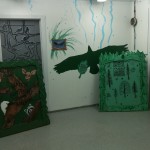 crayon (a bird, a moth, grass, etc.). When completed (even partially), the child gets a prize. The best thing for kids is a “Journey Pack,” which includes binoculars, a magnifying glass, several books, and plant identification charts, and they can check out the pack, to be returned to the park office at the base a day or so later.
crayon (a bird, a moth, grass, etc.). When completed (even partially), the child gets a prize. The best thing for kids is a “Journey Pack,” which includes binoculars, a magnifying glass, several books, and plant identification charts, and they can check out the pack, to be returned to the park office at the base a day or so later.
There’s also a 24-hour webcam showing the weather at the tower, updating every couple of minutes (currently cloudy, cold, and drizzly).
The SLC is operated by Friend of Moran State Park, a nonprofit volunteer organization. 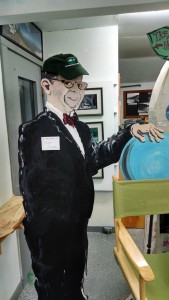 They also operate the gift shop across the way, and are the ones who arranged for us to be hosts here. All of their funds go to making Moran State Park a rewarding, enchanting, and educational resource for visitors.
They also operate the gift shop across the way, and are the ones who arranged for us to be hosts here. All of their funds go to making Moran State Park a rewarding, enchanting, and educational resource for visitors.
